Finding Collyweston Palace
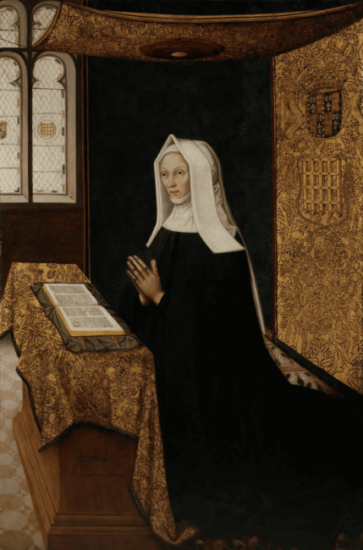
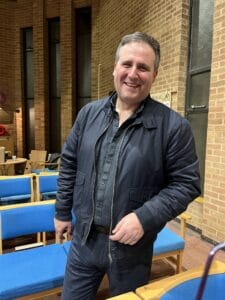
The January 2024 meeting of the Peterborough Local History Society was, as usual, well attended. Our speaker for the evening was the Chairman of the Collyweston Historical & Preservation Society, Chris Close, Chris became a reluctant historian after making a promise to a relative to keep the Collyweston’s Historical Society going ‘No matter What’. Chris admitted, when growing up he actually hated history and he had no idea what he was letting himself in for. So seven years ago at a meeting of the society where the 12 members were about to wind up the society he found himself stepping up to honour a promise. Going forward the Society members and village people decided they would like to know more about and try to locate a mythical Royal Palace that was reputed to have been located in the village.
Collyweston is a small village on the A43 in Northamptonshire. Mellow stone built cottages with their roofs tiled with Collyweston slate line the narrow streets. Not a place suggesting it was the site of an imposing royal palace. So, in 2017 with no evidence of any remains, no plan of it existing, with no expertise and no money, the members set about researching and looking for evidence of the mythical royal palace. Seven years later the Society’s members and the villagers have accumulated a mass of evidence and archaeology proving the existence of a vast and imposing dwelling.
A manor house was recorded as a dwelling in Collyweston village as early as the 13th century. In 1415, it was bought by a Sir William Porter and subsequently passed through further owners until It became a property of of the Crown. In 1486, it was gifted to Lady Margaret Beaufort, the Countess of Richmond and King HenryVIIs mother.
Historically, Lady Margaret Beaufort’s personality has been portrayed differently, depending on the authors intended article. Margaret, had a determined, strong and pious personality. Unusually in those tumultuous times of political intrigue she negotiated her way through the Tudor court intrigues with skill. Born with dubious royal blood she rose to power in Tudor England. Married at the age of seven, a union that was later dissolved. By the age of twelve she was again married to 24 year old Edmund Tudor, the Earl of Richmond but at just thirteen she became a widow, a few months before giving birth to her only child, Henry Tudor. In1472 Margret, herself negotiated a marriage to Thomas, Lord Stanley, the Steward of Edward IVs household.There followed years of turmoil and court intrigue in the Wars of the Roses, until her son Henry Tudor at the age of 22 defeated Richard III at the battle of Bosworth and became Henry VII.
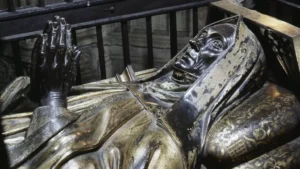
In 1846 the Manor at Collyweston was given to Lady Margaret, who was by now an important figure at the Royal Court as Mother of the King. Now the Manor under Margarets stewardship was extended and aggrandised and became a Royal Palace and a centre of power. During her stewardship of the Palace Margaret was seen as a pious and generous benefactor , caring greatly about the people in her household and properties. In its hey day the Palace was visited by no less than four future Monarchs. Henry VII, Henry VIII with Catherine Howard, Elizabeth I and the future Mary Queen of Scots. Sadly though a 150 years later this grand Royal Palace was lost to history and its site lost.
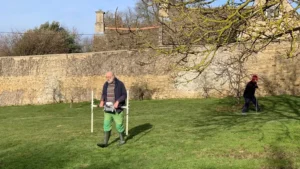
In Collyweston the myth of a long lost Royal Palace survived the generations and in 2017 the Collyweston Historical Society began their long quest to prove the myth and locate the site of the palace. The villagers turned amateur archaeologist and researchers. They applied for and got grants to search and now, after seven years ground breaking work have establish, without doubt, the presence and partial location of the palace. More evidence was found built in the walls of various houses and cottages around the village, when a survey of the village became aware of certain carved stones set into some of the dwellings that most certainly would have come from a grander structure.
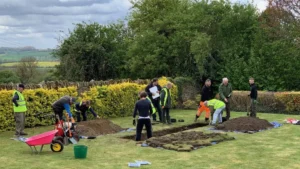
The Peterborough Local History Society would like to thank Chris Close for his enthralling history of the the progress of their ongoing search in his village for the long lost Palace. To learn more about their search for the Royal Palace and about Collyweston’s history go to their website – https://www.collywestonhistoricalsociety.org.uk/collyweston-palace
